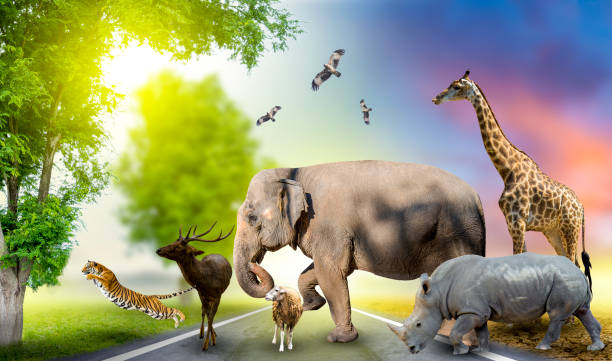Wildlife conservation is a critical and multifaceted endeavor aimed at protecting animal species and their habitats to maintain biodiversity and ecological balance. In an era marked by rapid industrialization, urbanization, and climate change, the importance of wildlife conservation cannot be overstated artificial intelligence in wildlife conservation. It is essential not only for the survival of individual species but also for the health of entire ecosystems and, ultimately, human well-being.
The Importance of Biodiversity
Biodiversity, the variety of life on Earth, plays a fundamental role in maintaining the balance of ecosystems. Each species, no matter how small, has a specific role that contributes to the stability and functionality of its ecosystem. For instance, bees pollinate plants, which in turn provide food and oxygen, while predators like wolves control the population of herbivores, preventing overgrazing.
When species are lost, the intricate web of life is disrupted, leading to unforeseen consequences. The extinction of a single species can trigger a domino effect, causing other species to decline and ecosystems to deteriorate. Therefore, conserving wildlife is crucial for preserving biodiversity and ensuring the resilience of ecosystems in the face of environmental changes.
Threats to Wildlife
Wildlife faces numerous threats, many of which are human-induced. Habitat destruction, caused by deforestation, urban expansion, and agricultural development, is the leading cause of species decline. As natural habitats are fragmented or destroyed, animals lose their homes, sources of food, and breeding grounds, leading to population declines.
Climate change exacerbates these threats by altering habitats and making them inhospitable for many species. Rising temperatures, changing precipitation patterns, and extreme weather events force species to adapt, migrate, or face extinction. Additionally, pollution, including plastic waste, pesticides, and oil spills, contaminates ecosystems and harms wildlife.
Poaching and illegal wildlife trade also pose significant threats. Many species are hunted for their fur, tusks, bones, or other body parts, driving them to the brink of extinction. This not only reduces populations but also disrupts genetic diversity, making species more vulnerable to diseases and environmental changes.
Conservation Strategies
Effective wildlife conservation requires a multi-pronged approach, combining legislation, habitat protection, sustainable practices, and community involvement.
- Legislation and International Agreements: Strong laws and international agreements, such as the Convention on International Trade in Endangered Species (CITES), play a vital role in regulating hunting, trade, and habitat destruction. These legal frameworks provide the foundation for protecting endangered species and ensuring sustainable practices.
- Protected Areas and Habitat Restoration: Establishing protected areas, such as national parks and wildlife reserves, is crucial for providing safe havens for wildlife. These areas safeguard habitats from human encroachment and allow ecosystems to function naturally. Additionally, habitat restoration projects, such as reforestation and wetland rehabilitation, help to repair damaged ecosystems and provide new habitats for displaced species.
- Sustainable Practices: Promoting sustainable agricultural, forestry, and fishing practices reduces the impact on wildlife habitats. Techniques like agroforestry, sustainable logging, and marine protected areas ensure that natural resources are used responsibly, allowing ecosystems to thrive alongside human activities.
- Community Involvement and Education: Engaging local communities in conservation efforts is essential for long-term success. By involving indigenous peoples and local residents, conservation programs can benefit from traditional knowledge and foster a sense of stewardship. Education and awareness campaigns also play a crucial role in changing attitudes and behaviors towards wildlife, promoting coexistence, and reducing human-wildlife conflicts.
- Scientific Research and Monitoring: Ongoing research and monitoring are vital for understanding the needs of species and the effectiveness of conservation strategies. By studying wildlife populations, genetic diversity, and ecological interactions, scientists can develop targeted conservation plans and adapt them as needed.
Success Stories and Hope for the Future
There are numerous success stories in wildlife conservation that demonstrate the potential for positive change. The recovery of the American bald eagle, once on the brink of extinction due to pesticide use, is a testament to the power of concerted conservation efforts. Similarly, the establishment of marine protected areas has led to the resurgence of fish populations and coral reefs in some regions.
